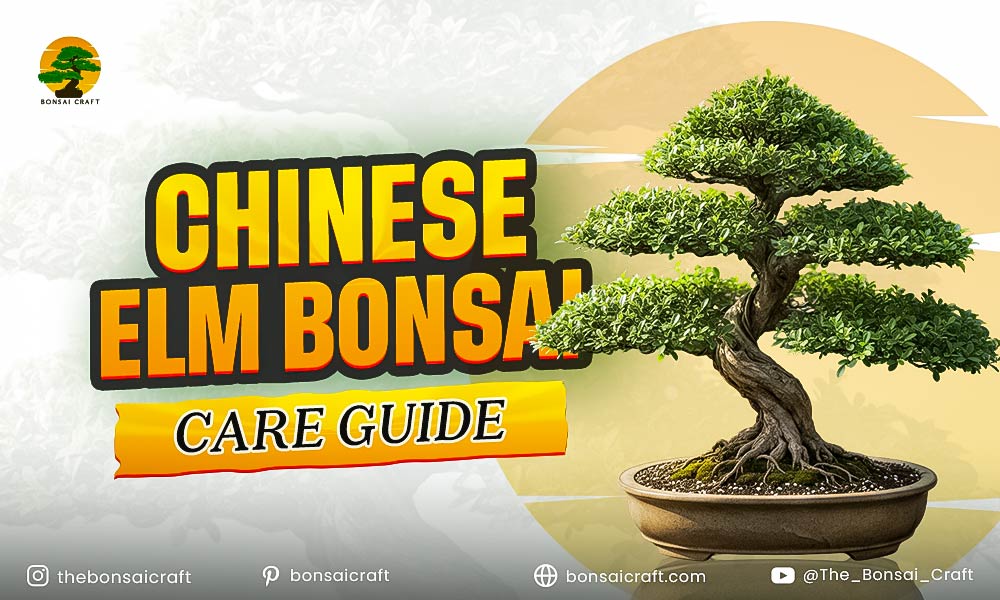
The Chinese Elm bonsai (Ulmus parvifolia) is one of the most popular bonsai trees for beginners and experienced growers alike. Known for its elegant small leaves, graceful branch structure, and adaptability, the Chinese Elm bonsai tree offers both beauty and resilience. Whether grown indoors or outdoors, this bonsai species can thrive with proper care, pruning, and styling.
As a bonsai grower with years of hands-on experience and consultations with horticultural experts, I’ve curated this detailed Chinese Elm bonsai care guide to help you nurture a healthy and stunning miniature tree. You’ll learn about watering, pruning, repotting, styling, winter care, and how to solve common issues — all based on expert knowledge and trusted sources.
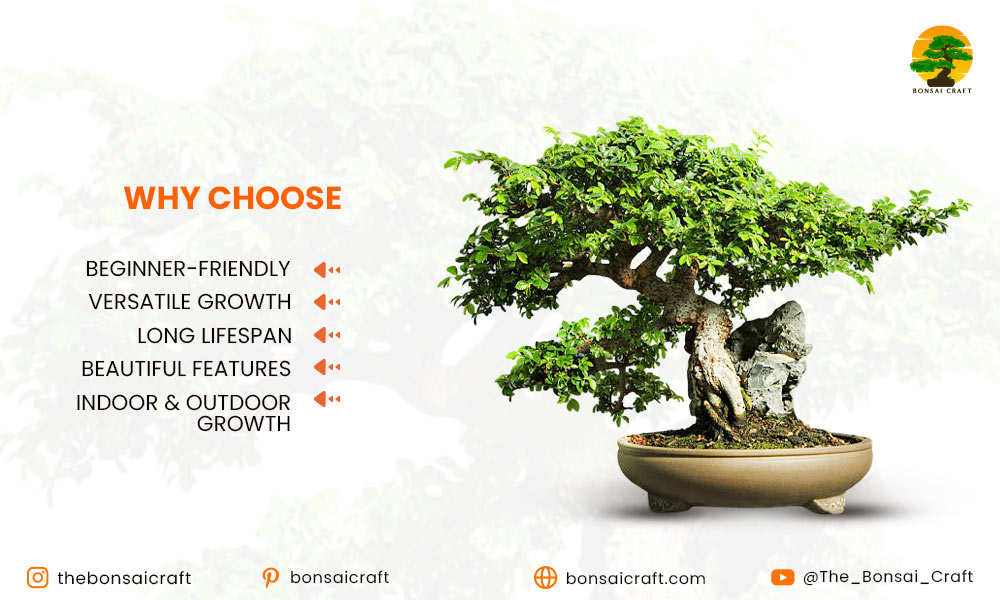
Why Choose a Chinese Elm Bonsai?
The Chinese Elm bonsai tree is highly regarded because:
- Beginner-friendly: Hardy and adaptable, tolerates minor mistakes.
- Versatile growth: Can be styled in multiple bonsai Chinese Elm styles (upright, slanting, broom).
- Indoor & outdoor growth: Can adapt to both environments with proper care.
- Beautiful features: Fine twigging, small serrated leaves, and sometimes small Chinese Elm bonsai flowers.
- Long lifespan: With consistent care, it can live for decades.
How to Care for a Chinese Elm Bonsai
Proper Chinese Elm bonsai care includes maintaining the right balance of light, water, soil, pruning, and seasonal adjustments.
Light Requirements for Chinese Elm Bonsai
The Chinese Elm bonsai tree thrives in bright, indirect sunlight. Outdoors, it prefers full sun to partial shade, while indoors it should be placed near a south-facing window or under grow lights.
- Outdoors: Best in spring, summer, and fall with direct sunlight.
- Indoors: Needs at least 6–8 hours of bright light daily.
- Rotate the pot to encourage even growth.
How Often to Water Chinese Elm Bonsai?
Water a Chinese Elm bonsai when the top layer of soil feels slightly dry. Never let the soil completely dry out, but avoid overwatering which can cause root rot.
Detailed Care:
- Check soil moisture daily, especially in summer.
- Use a chopstick or finger to test soil dryness.
- Ensure proper drainage with bonsai soil mix.
- Mist foliage occasionally to improve humidity when kept indoors.
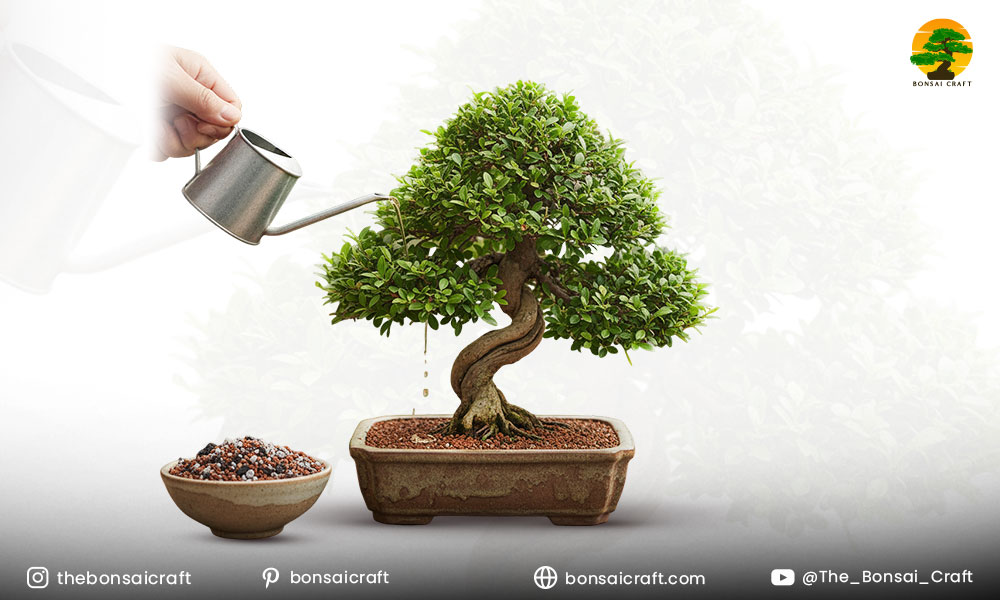
Chinese Elm Bonsai Soil and Fertilization
The Chinese Elm bonsai prefers well-draining bonsai soil with akadama, pumice, and lava rock. Avoid dense garden soil.
- Fertilize every 2 weeks during the growing season (spring–summer).
- Use a balanced liquid bonsai fertilizer.
- In the fall, reduce feeding to monthly.
- Stop fertilizing in winter when the tree is dormant.
When to Prune Chinese Elm Bonsai?
The best time to prune a Chinese Elm bonsai is during the active growing season (spring and summer). Light pruning can be done year-round, but heavy structural pruning is best in late winter before new growth emerges.
Detailed Care:
- Trim back new shoots to 2–3 leaves after they develop 6–8 leaves.
- Use sharp bonsai scissors for precise cuts.
- Pinch tips to encourage finer branching.
- Remove dead, crossing, or weak branches regularly.
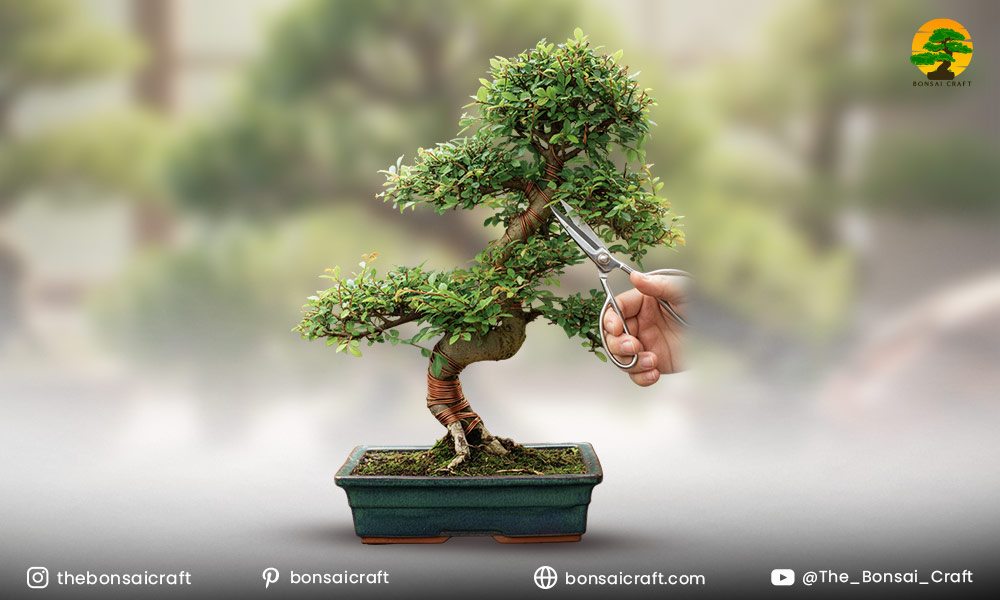
How to Prune a Chinese Elm Bonsai?
- Start by removing deadwood and weak branches.
- Thin out crowded areas to improve airflow and sunlight penetration.
- Maintain desired style (upright, broom, slanting, cascade).
- For dense foliage, defoliate partially in summer to increase ramification.
How to Wire a Chinese Elm Bonsai?
To wire a Chinese Elm bonsai, use aluminum or copper wire to gently shape branches. Apply in late spring or early summer, avoiding excessive pressure to prevent bark damage.
Steps:
- Select branches needing direction.
- Wrap the wire at a 45° angle around the branch.
- Bend slowly into the desired position.
- Check monthly to avoid wire scarring.
- Remove wire after 2–3 months.
How to Repot Chinese Elm Bonsai?
Repot a Chinese Elm bonsai every 2–3 years in early spring before new growth begins. Refresh soil, trim roots, and place in a shallow bonsai pot with good drainage.
Steps:
- Gently remove the tree from its pot.
- Prune up to one-third of the root mass.
- Untangle roots with a root rake.
- Place in fresh bonsai soil.
- Water thoroughly after repotting.
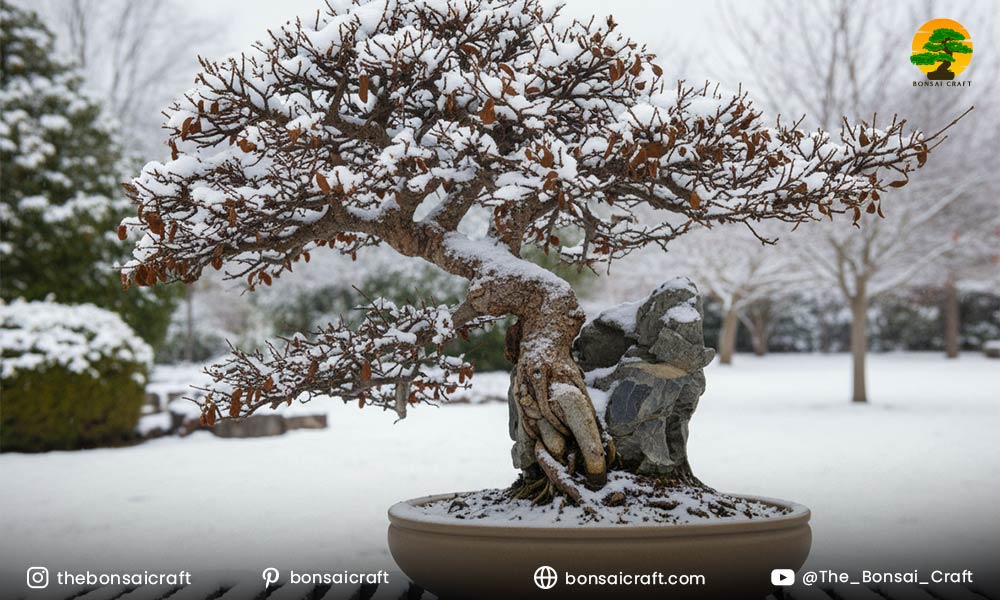
Chinese Elm Bonsai Winter Care
For winter, protect Chinese Elm bonsai from frost. Outdoors, place in a cold frame or unheated greenhouse. Indoors, keep near a cool window with bright light and reduce watering.
- Deciduous in cold climates: Will shed leaves in winter.
- Semi-evergreen in warmer climates: May retain some foliage.
- Avoid freezing roots by insulating pots.
Chinese Elm Bonsai Indoors or Outdoors?
A Chinese Elm bonsai can be kept both indoors and outdoors. Outdoors is ideal for strong growth, while indoors requires grow lights, stable temperatures, and extra humidity.
- Best outdoors in warm months.
- Indoors is suitable for year-round growth if provided with enough light and care.
Chinese Elm Bonsai Styles
Popular Chinese Elm bonsai styles include:
- Formal Upright (Chokkan) – Straight trunk, balanced branches.
- Informal Upright (Moyogi) – Trunk curves gently while maintaining a natural aesthetic.
- Broom Style (Hokidachi) – Despite being fan-shaped, it’s a superb crown style for the Chinese Elm.
- Slanting (Shakan) – A trunk that develops at an angle.
- Cascade (Kengai) – A style where the branches elegantly flow downwards.
Growing Chinese Elm Bonsai from Seeds
To grow a Chinese Elm bonsai from seeds, stratify seeds in the fridge for 6–8 weeks, sow in bonsai soil, and keep moist until germination. Seedlings can be trained into bonsai over time with pruning and wiring.
Common Pests and Diseases
- Aphids, scale, spider mites → Use neem oil or insecticidal soap.
- Powdery mildew → Improve airflow and reduce excess moisture.
- Root rot → Avoid overwatering, ensure good drainage.
Chinese Elm Bonsai Flowers
Although rare, the Chinese Elm bonsai may produce tiny, unnoticeable, green flowers in late summer, an indicator of vitality and growth.
Tips for Beginners
- Avoid seeds, and purchase a trained nursery tree.
- Identify and correct your pruning mistakes.
- Stronger growth is achieved by placing outdoors in the warm months.
- Possibly the most universal beginner’s mistake – under-watering plants.
Conclusion
The Chinese Elm bonsai tree is a resilient, elegant, and rewarding bonsai species. With proper Chinese Elm bonsai care — including correct watering, pruning, repotting, wiring, and winter protection — your bonsai can thrive for decades.
As an expert tip: observe your tree closely. Each bonsai Chinese Elm will respond differently to its environment. By adjusting care based on seasonal changes, you’ll enjoy a strong, healthy, and beautifully styled bonsai year after year.
FAQs About Chinese Elm Bonsai Care
How often should I water a Chinese Elm bonsai?
If the top layer is dry, water. The dry layer could be more prominent in the summer compared to the winter. The roots mustn’t be waterlogged.
Can Chinese Elm bonsai be kept indoors?
Chinese Elm bonsai care is possible if the indoor tree receives strong light, stable temperature, and consistent humidity. Usually, the tree grows better outdoors.
When to prune a Chinese Elm bonsai?
During the active growth stage in spring and summer, pruning will take place. The winter structural pruning should take place before thenewbuds show.
How to repot a Chinese Elm bonsai?
Every two to three years, the tree should be repotted and the roots should also be pruned to ensure smooth growth.
How long does a Chinese Elm bonsai live?
If maintained well, a Chinese Elm bonsai tree can live with you for over 50 years which is a positive long-term benefit for the tree.
